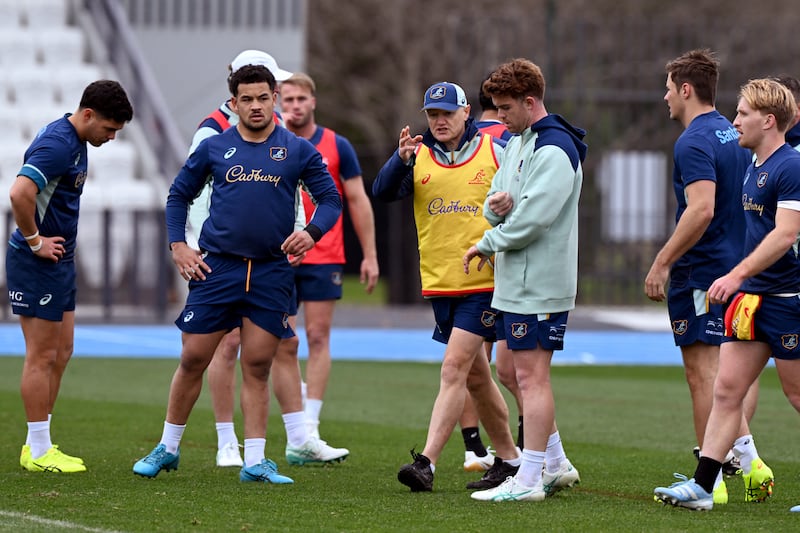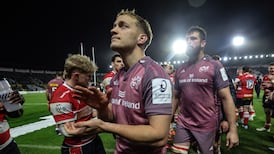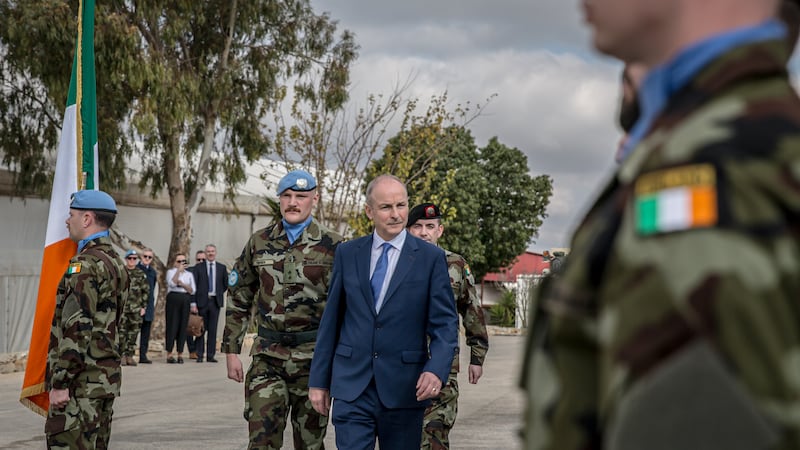Last Saturday night I watched my first live Wallabies match in more than a decade. After an “annus horribilis” in 2023 there were 36,000 rusted souls, all wearing gold, at the magnificent new Sydney Football Stadium.
While it was not a sell out, if you consider the Wallabies have not defeated a tier-one nation in Sydney in more than a decade, that was some turn out.
Carrying the new nickname of “Aussie Joe”, Joe Schmidt was not the home-grown coach of choice for these supporters but, with their undying faith that their beloved gold jersey will, one day, rise back to greatness, they turned up aiming to inspire their uninspiring team.
A win against an equally pedestrian Welsh team was the best they could hope for and, as they say, a win is a win.
READ MORE
Before the test in Sydney the Wallaby supporters gathered in bars to witness the astonishing high-tempo skills of the New Zealanders as they attempted to speed the game up while England dropped like they were playing for Gareth Southgate, clutching at limbs, trying desperately to slow the game down.
A punter wearing a gold scarf in the row in front of our seats turned and said, ”Did you see how Razor [Scott Robinson, NZ coach] has the Kiwis playing? They will put 50 on us.”
It was a statement of fact rather than an opinion.
Later that night as the Irish game was beamed into Australian homes direct from the highveld in Pretoria. The exceptional physicality on display between the top two ranked teams in the world put the Wallabies and Welsh game into perspective. The Kiwis, South Africa, France and Ireland are a class above the rest.
When Tony Brown was appointed as Springboks attack coach I was tantalised. From Otago to Japan as both player and coach, Brown has had the running game pumping through his veins.

For some time I have been arguing that the untapped attacking potential inside this Springboks team means they are capable of playing an expansive game equal to that of New Zealand, Ireland and France. A style that would enable the holders of the William Webb Ellis trophy to inspire the world rather than just bash it up.
Last weekend I was delighted to see the Boks attempting to play at a higher tempo with the ball in hand. As this was only their first match under Brown’s philosophy, the bad news for the rest of the rugby world is that if the Boks add a quality attacking dimension to their awesome physicality, they will become an even more imposing opposition.
Like all great teams, the Springboks are not standing still, basking in World Cup glory. They have already begun to evolve.
One wonders if the influence of Brown’s running rugby on the Springboks game plan may change their selection policy of 7-1 and 6-2 benches to protect that rarest of species – the Springbok backline player.
At the 48-minute mark of last week’s test, six giant reserve forwards entered the field to replace their Springbok comrades. Meaning that 12 Springbok forwards played only a touch over or a touch under half a match.
The rugby world is entitled to ask the question: is this use of the bench, with fresh forwards belting into a fatigued opposition, safe?
As the concussion crisis devastates rugby’s recruitment numbers because parents fear head injuries to their children, Craig Casey’s unconscious face flashed across the world’s TV screens. Put there by a loophole in our safety laws that allows coaches to select two packs of giants in the one team. Ensuring that opposition players who are fatigued are confronted physically by fresh players. Which is a sure-fire recipe for injury.
[ Matt Williams: Future of rugby at stake unless we learn from past scrum horrorsOpens in new window ]
Don’t take my word for it. Just ask the neurologists and concussion experts who have publicly expressed that exact argument regarding the current structure of the bench.
Never forget that the reserves bench was created because of a previous injury crisis in our game. During the 1980s, catastrophic scrum injuries ruined lives and threatened the very existence of rugby.
Wise administrators acted and created the concept of a reserves bench based on player safety. If a starting player was injured, a suitably trained replacement could safely be substituted.
The current law surrounding the composition of the reserves that permits coaches to discriminates against backline players is not only the moral opposite of the ethos of rugby – which says the game is for all body shapes – but, most importunely, it is not safe.

Watch Casey’s head sickeningly slapping on to the ground, with a giant fresh bench player around his chest. Then watch the Irish scrum explode with necks and bodies twisting uncontrollably.
Then attempt to create a coherent counterargument.
It is deeply perverse that laws that were created to keep players safe have been abused into a methodology that is overtly dangerous and discriminates against the selection of backline players, but are accepted as both safe and within the spirit of rugby by our leadership.
Here, let me quote the great words of Leo Tolstoy to speak the truth of our situation: “Wrong does not cease to be wrong because the majority share in it.”
No victory is worth risking a player’s safety.
While South Africa were unquestionably the better team and deserved to win, the Irish looked exhausted. After a 13-month shift they are bone tired and who can blame them?
While winning the Six Nations was a major achievement, the effort required across a heartbreaking World Cup campaign, with Irish players repeatedly going to the well and losing across the URC and the Champions Cup, has made this last trip to South Africa as testing as can be.
With the form of this season’s breakthrough players Jack Crowley, Calvin Nash and Joe McCarthy dipping as their rookie energy is all but spent, Saturday may be a homecoming victory lap for the reigning world champions.
















